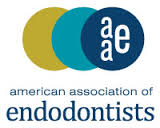TMJ (temporomandibular joint disorder) and bruxing, the chronic gnashing or grinding and clenching of your teeth, can often be related. TMJ can lead to bruxing and bruxing can lead to TMJ. Both can lead to pain and tension in facial muscles, jaw joints, head, neck, and shoulders, and bruxing can lead to severely worn and/or damaged teeth. Therefore, both require treatment.
Traditional Treatments
Traditionally, TMJ treatments consisted of medications, bite guards or mouth splints, and physical therapy, while treatment for bruxing consisted of behavioral therapy, relaxation techniques, and nighttime bite guards. Today, however, there are other ways to treat these issues: Botox and dermal fillers. Botox is a neurotoxin and protein, while dermal fillers consist of bovine collagen. Both ease the tension and discomfort in the facial muscles and jaw joints associated with bruxing and TMJ. While Botox is known for its cosmetic uses, it has actually been used therapeutically since the 19th century. Injections of these treatments can offer relief that lasts between four and six months.
Symptoms of TMJ and Bruxism
If you’re suffering from any of the following symptoms, contact your dentist ASAP for a complete evaluation. Botox or dermal filler treatments may help relieve your discomfort. Symptoms include:
- Jaw pain or tenderness
- Difficulty chewing
- Clicking and/or locking of the jaw joint
- Headaches or pain in the temples
- Muscle spasms
- Fractured, flattened, chipped, or loose teeth
- Increased tooth sensitivity
- Tired or tight jaw muscles
- Sharp pain in the ear/s
- Plugged ear
- Earache










